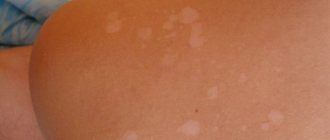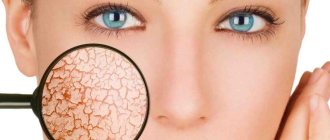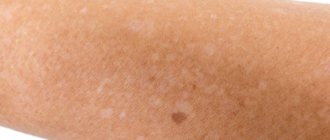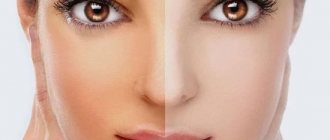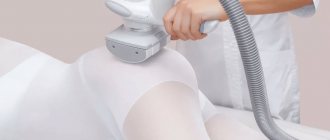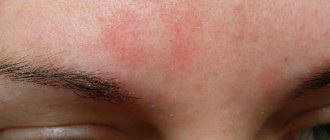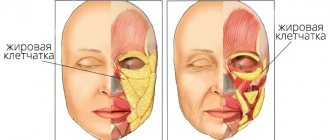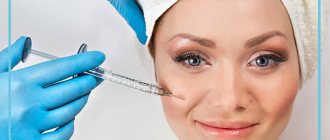A pleasant and uniform tan that does not evoke associations with charcoal shades, in most cases looks fresh and attractive. Golden-bronze tints on the skin transform the appearance, add notes of freshness and youth to it and, moreover, mask minor defects in the microrelief of the dermis. But achieving the ideal shade is not as easy as it seems at first glance: even meticulous skin care before and after tanning in a solarium and in the sun does not guarantee a 100% result - in some cases it is unrealistic to overcome genetics and body characteristics.
Sunbathe with caution
The appearance of white spots on the skin after sun exposure is one of the fairly common problems faced by lovers of sunbathing and ultraviolet cabins. What is the cause of such a defect, is it dangerous to health and what can be done to restore aesthetic perfection to the skin tone? Advice from experienced dermatologists and beauty experts will help you understand the features of such an anomaly.
Types of rashes
Spots are areas of a different shade from the surrounding skin. To the touch they can be smooth, protruding, or rough. Such manifestations on the surface of the skin are divided into 3 groups, which depend on the provoking factors and description.
- Vascular. Pinkish markings, available in red and purple.
Vascular spot - Pigment. The rash is white and brown in color. Appears against a background of deficiency or excess of melanin.
Pigment spots on the back - Artificial . Appear after the introduction of coloring substances under the skin - tattoo, permanent makeup.
In addition to this classification, there are separate types of marks related to certain pathologies. For example, ringworm. With it, papules disperse throughout the body. Depending on the type, they may also be on the head.
Vascular spots
| Name | Description |
| Hyperemic (blood) | Inflammatory and non-inflammatory. The first option arises against the background of current processes in the body. The size of the spots ranges from 2 cm (roseola) to 3-4 cm and above (erythema). The second option involves a rash that occurs as a result of an emotional outburst. Observed in the chest, neck, face |
| Hemorrhagic | Appear after a bruise or rough impact on the skin. They disappear on their own after 7-14 days. If bruises appear spontaneously and do not disappear for a long time, there is a risk of developing a disease that begins to affect blood vessels |
| Telangiectatic | These are spider veins that arise against the background of short-term dilation of blood vessels. Their occurrence is either congenital or acquired. There are many reasons for this - diet, bad habits, climate, temperature changes |
Dark spots
Markings of light and dark shades are observed on the skin if the amount of melanin has changed. The spots are:
- Hyper. The reason is increased pigmentation in a certain area. Congenital and acquired. The first includes birthmarks, the second - freckles.
- Hypo. The reason is a decrease in the amount of melanin. They also arise from birth and are acquired throughout life. The latter occur with psoriasis, lichen, and vitiligo.
Spots on the back with vitiligo
Age spots may appear if you often go to the solarium. Also, the cause is prolonged lack of treatment in the presence of inflammation on the skin. For example, acne often leaves behind marks. This also includes burns, cauterization of pimples, and rough squeezing.
Pregnancy and hormone intake are common causes for the formation of spots. If a person is prone to freckles, age spots will not bypass him. Old age is also included in this list.
Before you start fighting pigmentation, you need to know what caused it. This is due to the fact that some stains go away on their own, without wasting money and time.
Video - Why do brown spots appear on the skin of the chest and back?
How to increase your chances of an even tan? Useful tips
Treatment of dermatological defects directly depends on the reasons that caused them. But what to do if everything is in order with your health, a medical examination did not reveal any abnormalities, and the flawless shade does not want to “lay down” on the skin? Try changing your approach to daily care and tanning sessions, and perhaps the color will be natural and uniform, and there will be no trace of white spots left:
- Main quality! Avoid cheap and untested skincare products. At best, it will be useless, at worst, it can harm the tanning dermis. It is better to buy 1-2, but high-quality creams or lotions that can provide the dermal cells with everything they need.
- Monitor your vitamin balance. Vitamin and mineral complexes included in cosmetics can intensively nourish the dermis, as a result of which it tans better and more actively. Ideally, the chosen cream will contain vitamins A and E, natural oils and plant extracts for deep nutrition of skin cells (the effect of vitamins on tanning).
The main thing for skin is care
- Maintain drinking regime. Dehydration affects not only the condition of internal organs, but also the sensitivity of the skin. Try to drink more fluids before and after sun exposure, and also avoid overly salty and smoked foods that retain water in the body - this way you can maintain a normal water-salt balance.
- Cleanse your skin in a timely manner. Dead skin flakes, clogged pores, sweat, sebum deposits and other impurities unevenly reduce the skin's sensitivity to ultraviolet light, which can lead to blemishes. Therefore, when going to the beach, take sanitary napkins with you to cleanse your skin, and also regularly use mild peels and detergents designed for delicate cleansing - this will help you prepare for the session and make your tan more durable.
- Maintain good hygiene. When visiting a solarium, make sure that the administrator treats the booth with a disinfectant after each client. Be sure to use disposable mats, paper footprints to protect your feet, and your own sunglasses - this way you will protect yourself from infectious skin diseases.
Reduce your tanning sessions
And most importantly, don’t overdo it! If, despite all efforts, the tan does not become uniform and deep, and the number and size of white spots increases, you should give up long sunbathing and sessions in the solarium - alas, in this case you will not be able to overcome the peculiarities of your skin.
Red spots on the skin
Every person has had strange spots on their skin at least once. Red spots appear for many reasons. However, they can be a slight irritation and indicate a deadly condition. If changes in the skin are observed along with fever, swelling, pain, itching, then it is important to seek help in time.
- Allergies to foods, sunlight, household chemicals, medications.
- Dermatitis.
- Lack of vitamins (seasonal).
- Low immunity.
- Infections.
- STD.
- Stress.
Rash due to illness
People, especially men, do not always pay attention to changes in skin tone in certain places. The reason for their appearance may be various factors. It is important to diagnose a provocateur. By eliminating it, the stains will also disappear. In the stronger half of humanity, red marks are more often associated with the following “pathogens”:
Causes of age spots
1. Total dose of ultraviolet rays received over a lifetime
Histological studies of skin sections have shown that a person receives and accumulates 50% of the damage to skin structures by the age of 18.
Clinical manifestations of these injuries occur by the age of 25–30 years. This suggests that in childhood and adolescence, sunscreens were not used and there was no competent control of a person’s exposure to open sunlight. The process is aggravated by the fact that children's skin has an incompetent melanocyte system that does not function fully. Children's skin has little protection against the aggression of UV rays.
2. Sunburn
It has a traumatic effect on human skin and requires adequate restorative treatment. Otherwise, the risk of disruption of melanocyte function and the appearance of pigment spots increases.
It has been proven that for persistent pigmentation to appear, it is enough to get sunburned three times, i.e. "get sunburned."
In young people and children, sunburn is not perceived as something serious, the skin is restored relatively quickly externally, and internal damage is not visible to the naked eye.
Cellular disorders and breakdowns accumulate, manifestations occur after 30 years of early aging - the appearance of wrinkles, dry skin and age spots. These are manifestations of photoaging, which occurs not only in residents of sunny regions.
In the future, it will be enough to be exposed to the sun's rays for a short time and pigment spots will reappear on the skin.
Infectious diseases
Measles, rubella, scarlet fever, chickenpox are infectious processes. Marks and blisters appear on the body. These diagnosed diseases imply that the patient is isolated from society.
Measles
It may manifest itself against the background of a cough or fever. The rash starts on the face and goes down to the heels. In appearance it looks like red bumps that can merge into one large spot. Even after the illness ends, marks may remain on the skin.
Rubella
This is a small rash accompanied by fever. The virus reaches humans through the air. At the initial stage, you feel unwell and weak. Body temperature does not exceed 380. A little later a runny nose is observed. Then a rash begins to appear in the face area, and further along the body. Spots – 6 mm. Complications from this pathology are more common in adults.
Factors that provoke the occurrence of pigmentation
The main provocateur of pigmentation, among other disorders, is solar radiation . Under the influence of UV rays, the synthesis of melanocrine is induced - a hormone of the pituitary gland, which activates the work of pigment cells. The main contributing factors are:
- Genetic predisposition – dark skin color. People with genetically more melanocytes are more likely to develop pigmentation
- Hormonal disorders (pregnancy, endocrine diseases, taking hormonal drugs)
- Excess free radicals
The combination of an excessive amount of ultraviolet radiation with one of two predisposing factors equals the appearance of age spots.
Diagnosis and treatment
The cause of the rash is determined by a specialized doctor. As a rule, a visual examination first follows, then tests and additional examination are prescribed. It is useless to describe the rash in words or in correspondence - it is impossible to make a diagnosis in this way, just like on your own. Therefore, if “unhealthy” spots appear on the skin, you need to make an appointment with a dermatologist. If there is a suspicion of a skin pathology, it may additionally be recommended to take a scraping from the affected area for further examination.
Treatment of rashes should be under the guidance of a physician. His task is to prescribe effective and appropriate therapy. In cases of chickenpox, measles and rubella, there is no need to take a course of antibiotics.
If we are talking about a rash due to the presence of scabies mites, then the treatment will be simple. Rashes of an allergic nature require taking samples and prescribing treatment to eliminate the pathogen. Non-infectious skin diseases do not go away on their own; proper treatment is required, taking into account all the characteristics of the body.
Any spot of unknown origin on the body should be shown to a dermatologist if there is cause for concern. Do not voluntarily take medications not prescribed by a doctor. If treated incorrectly, there is a risk that the disease will worsen and then more serious treatment will be required, including hospitalization.
How to get rid of acne on shoulders
When dealing with acne, you only need an integrated approach - to “hit” on all fronts. Topical treatment of the skin on the shoulders will give little or short-term effect. To get rid of acne on the shoulders , you need to remove the internal causes. To do this, you need to contact specialists.
acne on back and shoulders photo
Preventing acne on the shoulders
It is impossible to predict the appearance of acne on the shoulders , but you can reduce their number and the “scope” of the process using the following methods:
- try to open the affected areas more often so that the skin “breathes”;
- wear synthetic clothes less often, give preference to natural fabrics;
- Do not squeeze pimples under any circumstances! this provokes their spread to healthy skin;
- It is not advisable to do peeling or cleaning in the presence of inflamed areas;
- take care of your personal hygiene.
Treating acne on shoulders yourself
Self-treatment is not recommended, since in case of any abnormalities in the functioning of the body, the problem should be dealt with by a specialist. After all, you can misdiagnose the disease yourself and, accordingly, receive treatment without results.
But if you are confident that you can handle it on your own, use the following means:
- tea tree oil: treat rashes with it 1-2 times a day;
- decoction of chamomile, calendula and sage: you can freeze the prepared decoction in an ice tray and treat acne 2-3 times a day;
- tar soap: this soap has an antibacterial component that reduces existing inflammation and prevents the appearance of new acne; its only disadvantage is that tar soap “dries” the skin;
- alcohol tinctures: salicylic acid and calendula tincture are rightfully considered the most effective; You should only lubricate the pimple, take care of unaffected skin;
- pharmaceutical preparations: “Baziron”, “Zinerit”.
causes of acne on the back and shoulders

